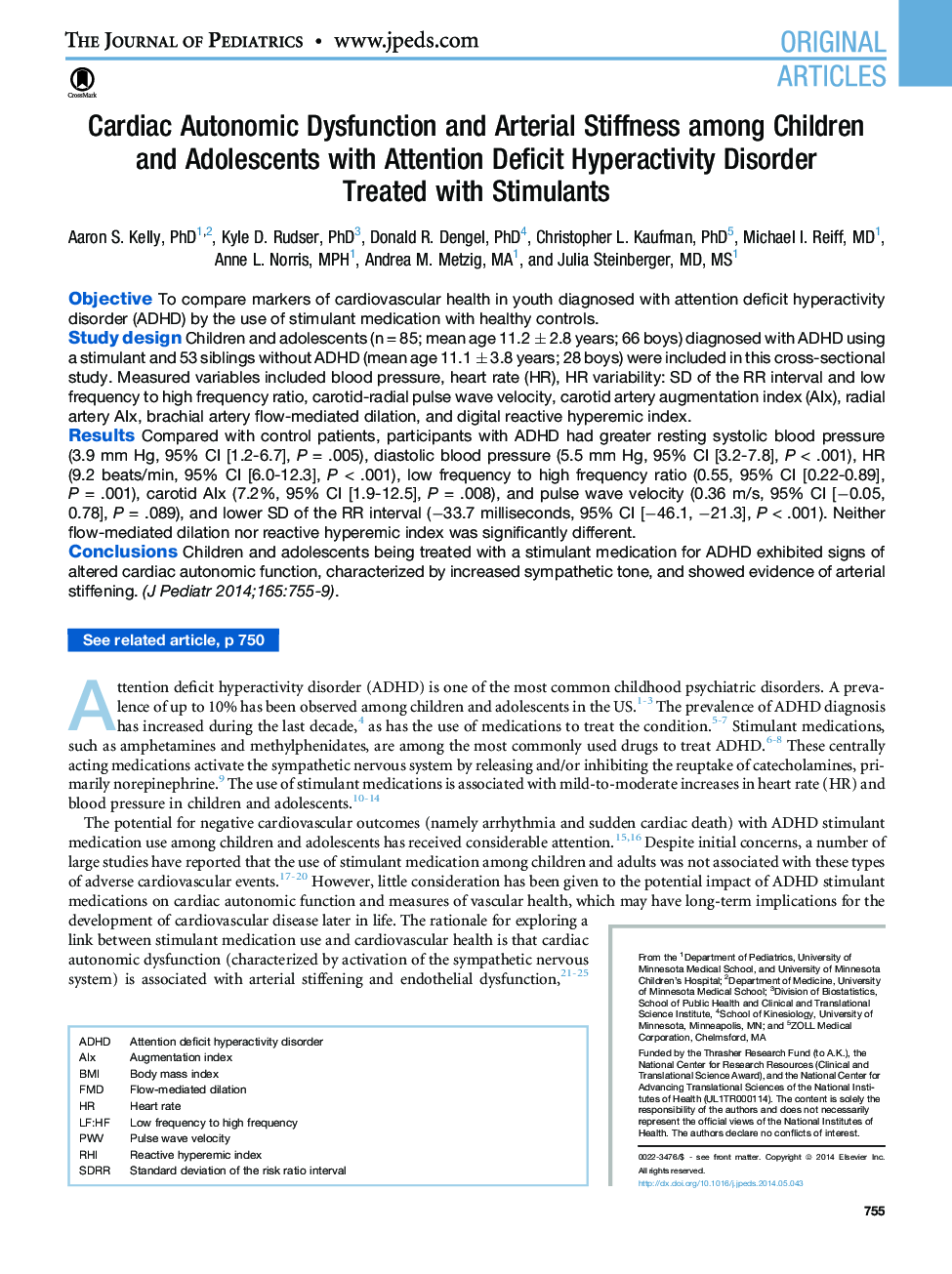| Article ID | Journal | Published Year | Pages | File Type |
|---|---|---|---|---|
| 4164948 | The Journal of Pediatrics | 2014 | 5 Pages |
ObjectiveTo compare markers of cardiovascular health in youth diagnosed with attention deficit hyperactivity disorder (ADHD) by the use of stimulant medication with healthy controls.Study designChildren and adolescents (n = 85; mean age 11.2 ± 2.8 years; 66 boys) diagnosed with ADHD using a stimulant and 53 siblings without ADHD (mean age 11.1 ± 3.8 years; 28 boys) were included in this cross-sectional study. Measured variables included blood pressure, heart rate (HR), HR variability: SD of the RR interval and low frequency to high frequency ratio, carotid-radial pulse wave velocity, carotid artery augmentation index (AIx), radial artery AIx, brachial artery flow-mediated dilation, and digital reactive hyperemic index.ResultsCompared with control patients, participants with ADHD had greater resting systolic blood pressure (3.9 mm Hg, 95% CI [1.2-6.7], P = .005), diastolic blood pressure (5.5 mm Hg, 95% CI [3.2-7.8], P < .001), HR (9.2 beats/min, 95% CI [6.0-12.3], P < .001), low frequency to high frequency ratio (0.55, 95% CI [0.22-0.89], P = .001), carotid AIx (7.2%, 95% CI [1.9-12.5], P = .008), and pulse wave velocity (0.36 m/s, 95% CI [−0.05, 0.78], P = .089), and lower SD of the RR interval (−33.7 milliseconds, 95% CI [−46.1, −21.3], P < .001). Neither flow-mediated dilation nor reactive hyperemic index was significantly different.ConclusionsChildren and adolescents being treated with a stimulant medication for ADHD exhibited signs of altered cardiac autonomic function, characterized by increased sympathetic tone, and showed evidence of arterial stiffening.
